KTRH 50 kW Installation, Baytown, 1943-1981
Bob Stroupe, Houston Director of Engineering for Clear Channel Radio, says that KTRH’s move to 740 kHz in 1943 was prompted by the North American Radio Broadcast Agreement of 1941. The changes instigated by that agreement created a Canadian Clear Channel (Toronto) on 740 kHz. While that allowed only one Class I-A (now Class A) it allowed many Class II stations, all of which had to protect the Canadian I-A.
This allowed KTRH to apply for and be granted a license on 740 kHz. at 50 kW day and 50 kW night with the use of a directional antenna. Without the directional antenna, KTRH, could have been licensed with 10 kW day and 1 kW night.
The original KTRH 50 kW site was at Baytown, TX, using self supporting towers and was completed in 1943. According to information I have posted elsewhere on the blog from the FCC database, KTRH went to 50 kW in April, 1943.
Stroupe says the original proof of the directional antenna remains, accompanied by a note to the effect that a minimal proof was conducted due to wartime gas rationing. He adds that the 5 kW RCA, newly installed at the joint KTRH/KPRC plant at the original site at Deepwater on the La Porte Highway in January, 1936, might have been moved to Baytown as a backup but I have no information about whether than was in fact done.

Sam Lester was the resident transmitter engineer at the KTRH facility on FM 565, Cove Rd., northeast of Baytown from 1959 until 1981. Sam started work in March, 1959, and lived on the premises. In 1981 a fully remote controlled operation was installed at a new transmitter site at Dayton and Sam took early retirement. He has been living at Toledo Bend since 1986. These photos shows the transmitter building ca. 1961.

Sam says that in 1959, the transmitter was still receiving programming over open telephone lines on glass insulators from the Rice Hotel. Years later, a microwave link was installed. In 1959 KTRH was still running all the CBS network programs including soap operas and the Arthur Godfrey program. The station also carried regular Sunday concerts of the Houston Symphony Orchestra and was the flagship for the Houston Buffs. Later, the station went to all-talk and news.

This shot shows a panoramic view of the 30 acre site which included the 4 tower phased array. Sam’s apartment was on the second floor of the building. The pattern change took place at sunrise and sundown. In the morning, Dewey Compton would say ‘We now pause for 5 seconds while we fire our power into East Texas.’ That was the cue for Sam to activate the pattern change.

The transmitter was an RCA model 50E, air-cooled. This is a view of the control console and the transmitter enclosure. The center section is the Class C final stage.

This is another shot of the control console and about half of the front of the transmitter enclosure. That’s Sam Lester in the chair; Sam was a photography buff and used a variety of cameras in taking these pictures.

This is a view of the other end of the enclosure. The enclosure at the end is the antenna common point for the distribution networks.

This is the audio modulator stage with two 895R tubes. The copper fins are the plate for the tube.

A close-up of the 895R tube. Each weighed about 230 pounds. The Class C final stage used four of these tubes.

This is the number 4 tower. The wire on the poles is the 5 wire open air coax feed lines.

The two pole structure on the left is the ‘Rat Nest’ feeding the four tower array.

A close up of the Rat Nest with the number one tower in the rear.

The tuning network at the base of one of the antennas. This is inside the little building seen in the previous picture.

Another shot of the control console with Sam making entries in the log.

KTRH was knocked off the air for several hours in September, 1961, by Hurricane Carla. This shows the grounds shortly after the storm.

A shot of part of the antenna system after Carla. As a result of this event, a GM diesel generator and a Gates 10K auxiliary transmitter were installed.

This is the Gates 10K back-up. Sam is taking some readings during a test.
Then and Now: The antennas and transmitter were long since dismantled and sold but the building is still in existence on FM 565, about 1 mile west of Houston Raceway Park. According to an article in the Baytown Sun, it was converted to a private residence in 1984. It was difficult to tell on a recent visit if the place is currently occupied but the building itself appears to be in good shape for a 65 year old structure. I realized as soon as I turned on to FM 565 off Texas 146 that I had been there before for a station remote at the Raceway and I remembered when I saw it that I had noticed the building when I drove past it before and wondered what it was. I’ll bet many, many Houstonians have passed by that facility and had no idea what it was.
My thanks to Sam Lester and Bob Stroupe for their help in compiling information for this article and to Sam for generously sharing these photos.
See additional photos of this installation taken in 1948 here.



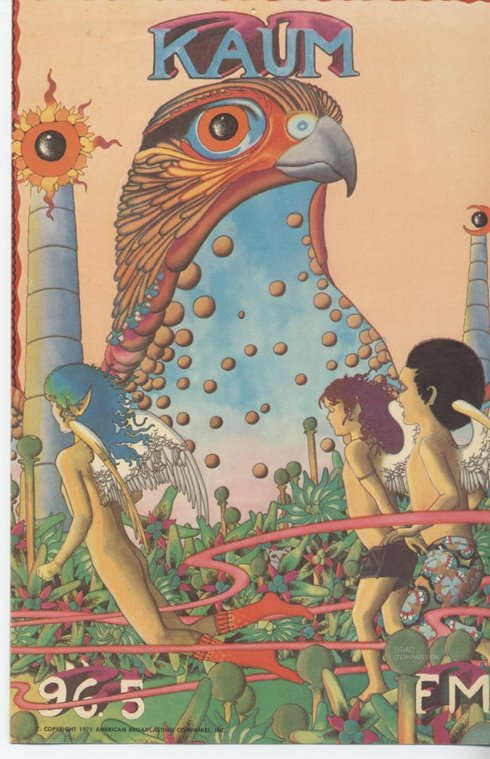
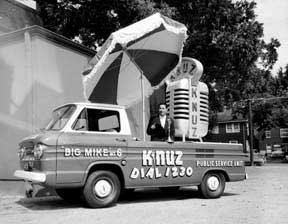


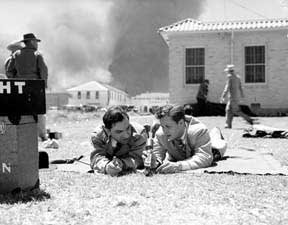
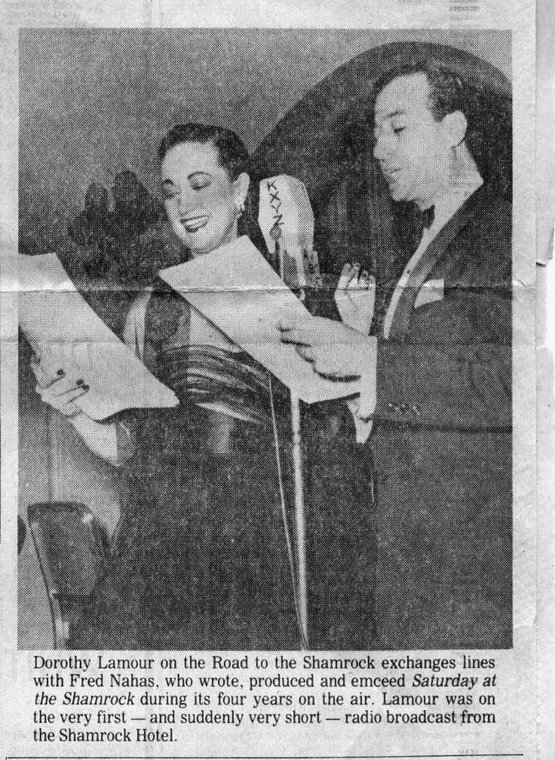
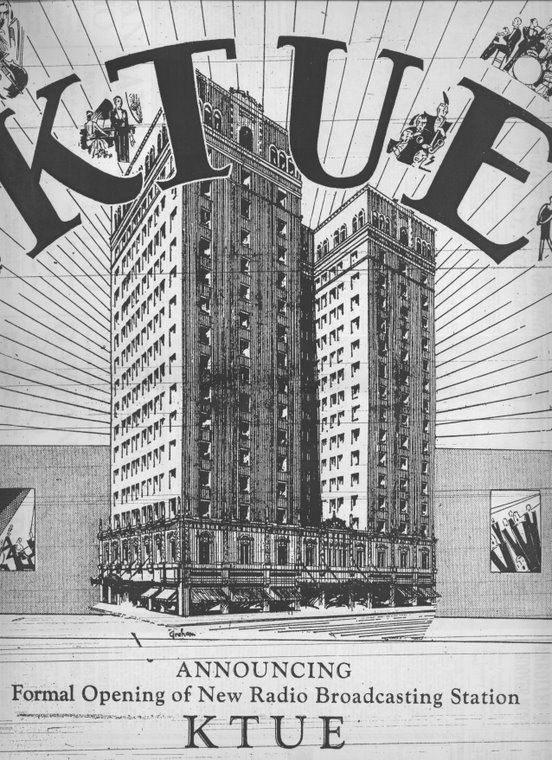
6 comments:
I grew up in CoveTx. And yes I remember when this was a radio station. It wasn't until my late teens to early twenties did this become someone's residence . I live in Cypress ,Tx. now but still remember seeing the red blinking lights on the towers as we would drive past the old station.
I spent considerable time with my Aunt and Uncle at the Baytown transmitter in the late 1940's and early 1950's
My Uncle was Tom L Hiner. He was transmitter engineer at that time. He left KTRH to become chief engineer for the
new KTRK TV station. The Carr Family post about the red blinking tower lights reminded me that as a toddler my favorite thing my Uncle allowed me to do was flip the switch turning on those red blinking tower lights.
Spent my youth in Baytown area and KTRH was the strongest signal by far on my homemade crystal set. Working at local chemical plant in the mid 1970s, I remember KTRH's strong signal would sometimes be heard on our plant telephone system. The transmitter towers on Cove Rd were local landmarks and served a dual purpose for navigation in Trinity and Galveston Bays. Does anyone know what happened to the free standing towers?
One of the first AM broadcast stations I inspected as an FCC inspector in 1965. Still remember it, as well as my conclusion that I could predict the number of violation notices I might issue within the first 15 seconds of seeing the transmitter plant. Only other place I ever personally saw the overhead 6-wire coax line was WCKY in Cincinnati, where I later became chief engineer. (Am I right in recalling that there were two leads serving as the center conductor?) davidsonmorrison@aol.com
When I worked at KLOL, I went to the KTRH transmitter with engineer Bob West. He handed a full size fluorescent light bulb to take into the transmitter room with me...When I walked inside, the darn thing lit up by itself from all the RF in the room..I didn't stay in there long..I don't think it was a very healthy place to be....Jim Hilty former KLOL PD
In 1981 I was a meter reader for HL&P. I had to read the rural light meters out in that area, and one of the locations was the x-mitter site there. Though, to be honest, I had payed no attention to the 4 tower array, trying to get done in the heat of the day. I never got to enter the building, the guy answering the door acting suspicious. Looking back, I figure the destruction of the Pacifica x-mitter site was the reason. It would be a few years later after I began working for the Baytown station, KBUK AM 1360, that I would look back and figure out I had been at the KTRH site. Sure would have loved to go in and see the big powerhouse there, as I would also become an engineer of sorts, and am an affectionado of historical radio stations and their sites.
Post a Comment